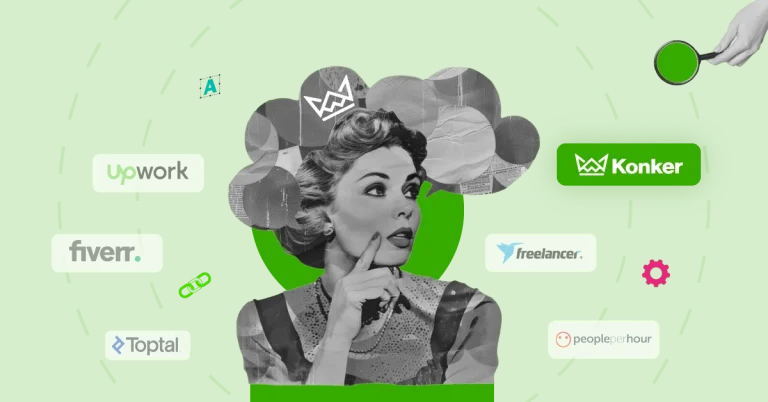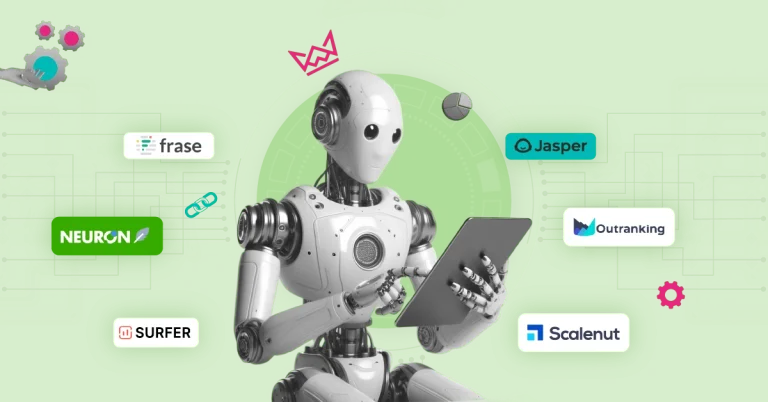The way people work is changing. With the rise of digital platforms, remote jobs, and the gig economy, many professionals are stepping away from the traditional 9-to-5 and exploring the world of freelancing. Some are drawn to the independence and flexibility it offers, while others prefer the security and benefits that come with a full-time job. The decision between freelance vs full-time job isn’t just about income—it’s about lifestyle, work preferences, and long-term career goals.
Both career paths have their advantages and challenges. A full-time job provides stability, predictable income, and benefits like health insurance, while freelancing offers the freedom to work on your own terms, choose your clients, and potentially earn more. However, freelancing also comes with financial uncertainty and requires strong self-discipline, whereas full-time jobs may limit your flexibility and creativity.
So, which one is right for you? This guide breaks down the key differences, pros, and cons to help you make an informed decision. Whether you’re considering a career switch, starting fresh, or looking to supplement your income, understanding these work models can help you choose the best path forward.
What is Freelancing?
Freelancing is a self-employment model where individuals work on a project or contract basis rather than being tied to a single employer. Freelancers choose their clients, set their rates, and manage their workload. This approach is popular in industries like writing, graphic design, programming, marketing, and consulting.
Unlike full-time employees, freelancers don’t receive benefits like health insurance or paid time off. However, they have the flexibility to work from anywhere and pick the projects they enjoy. Income depends on workload and client demand, making financial planning an important aspect of freelancing.
What is a Full-Time Job?
A full-time job means working under an employer with a set schedule, typically 40 hours per week. Employees receive a fixed salary, benefits like health insurance and retirement plans, and a structured career path. Many full-time roles come with job security, mentorship opportunities, and access to company resources.
While full-time jobs provide stability, they also require adherence to company policies, fixed working hours, and limited control over work projects. Many people prefer full-time roles for financial predictability, while others see them as restrictive compared to freelancing.
Key Differences Between Freelancing and Full-Time Jobs
Understanding the differences between freelance vs full-time job can help you decide which one aligns with your career goals and lifestyle. Here’s how they compare:
table with more detailed comparisons:
| Factor | Freelancing | Full-Time Job |
| Income Stability | No guaranteed income. Earnings fluctuate based on projects, client demand, and market trends. Some months may be highly profitable, while others may be slow. | Fixed monthly salary, ensuring financial stability regardless of workload or economic conditions. Employees know exactly how much they will earn each month. |
| Work Schedule | Complete flexibility. Freelancers decide their work hours and location, allowing for better work-life balance but requiring strong time management. Deadlines can sometimes lead to unpredictable hours. | Fixed schedule, typically 9-to-5. While it provides routine and stability, it limits flexibility and requires adhering to company policies. Overtime may be required during peak workloads. |
| Job Security | No employment contract. Work is project-based, meaning contracts can end anytime. However, working with multiple clients reduces dependency on a single income source. | Higher job security with long-term employment contracts. Layoffs and economic downturns can still affect stability, but employees typically have more protection. |
| Benefits | No employer-provided benefits. Freelancers must arrange their own health insurance, retirement savings, and paid time off. Taxes and business expenses are also self-managed. | Employers provide benefits like health insurance, paid leave, retirement contributions (401k), and other perks like bonuses, sick leave, and career development programs. |
| Workload | Freelancers handle multiple clients and projects simultaneously. Workload fluctuates, requiring strong self-discipline and organization. No fixed job roles, so tasks can vary significantly. | Work responsibilities are defined by the employer. Workload is more predictable, though high-pressure deadlines and workplace expectations can sometimes cause stress. |
| Career Growth | Growth depends on skills, networking, and branding. Freelancers must constantly upgrade their skills and market themselves to attract high-paying clients. No clear promotion structure, but opportunities for high earnings exist. | Companies offer structured career progression, training, and promotions. Employees can climb the corporate ladder through performance and tenure, leading to leadership positions. |
| Work-Life Balance | More control over work-life balance. Can take breaks and vacations whenever needed, but client demands may require working odd hours. Unpredictable workloads can sometimes lead to stress. | Defined work hours provide structure, but commuting, office politics, and job pressure may reduce personal time. Paid leave allows employees to take breaks without income loss. |
This detailed breakdown gives a clearer perspective on the pros and cons of freelance vs full-time job, helping you decide which one aligns better with your career and lifestyle goals.
Pros and Cons of Freelancing
Freelancing comes with both advantages and challenges. Here’s a breakdown of what to expect:
Pros of Freelancing
- Work on Your Terms: Choose your projects, clients, and work schedule.
- No Office Politics: Avoid workplace conflicts and unnecessary meetings.
- Higher Earning Potential: The more you work, the more you earn. Skilled freelancers can charge premium rates.
- Location Independence: Work from anywhere, whether at home, a café, or while traveling.
- Diverse Experience: Work with multiple industries and clients, building a strong portfolio.
Cons of Freelancing
- Unstable Income: Work availability varies, leading to inconsistent earnings.
- No Employer Benefits: Health insurance, retirement plans, and paid leave must be self-managed.
- Client Acquisition: Finding clients and securing work can be challenging.
- Self-Discipline Required: Managing deadlines, finances, and productivity without supervision can be difficult.
- No Guaranteed Career Growth: No structured promotions or salary increments; growth depends on personal efforts.
Freelancing offers flexibility and financial potential but comes with uncertainties. The choice between freelancing a full-time job depends on individual preferences and risk tolerance.
Pros and Cons of Full-Time Jobs
A full-time job offers stability, but it also comes with its own challenges. Here’s a closer look:
Pros of Full-Time Jobs
- Steady Paycheck: Fixed salary ensures financial security.
- Employee Benefits: Health insurance, paid leave, and retirement plans are included.
- Structured Career Growth: Clear promotions, training, and skill development opportunities.
- Work-Life Balance: Defined work hours help maintain a routine.
- Job Security: Long-term employment reduces financial uncertainty.
Cons of Full-Time Jobs
- Less Flexibility: The employer controls work hours and schedules.
- Limited Earning Potential: Salary growth is fixed and depends on company policies.
- Office Politics: Workplace dynamics and management decisions may affect job satisfaction.
- Commute and Fixed Location: Many jobs require working in an office, leading to commuting time and expenses.
- Limited Control Over Work: Employees follow company objectives rather than personal interests.
A full-time job provides security and structured growth but can feel restrictive for those seeking independence. The decision between freelance vs full-time job depends on work style and long-term goals.
Which One is Right for You?
The choice between freelance vs full-time job depends on your career goals, risk tolerance, and lifestyle preferences. Here’s how to determine what suits you best:
Freelancing is Ideal If:
- You prefer flexibility and want to work on your own schedule.
- You’re comfortable with irregular income and can manage finances independently.
- You enjoy working with different clients and industries.
- You want to build your personal brand or business.
- You’re self-disciplined and can handle project deadlines without supervision.
Full-Time Jobs are Better If:
- You need a stable income with financial security.
- You value structured career growth with promotions and training.
- You prefer employer-provided benefits like health insurance and paid leave.
- You work better in a team environment with clear responsibilities.
- You want job security and a long-term career path.
The decision between freelance vs full-time job comes down to priorities. If stability matters most, a full-time job is the way to go. If freedom and variety excite you, freelancing might be the better choice.
Hybrid Approach: The Best of Both Worlds
If you’re unsure whether to choose freelance vs a full-time job, why not try both? A hybrid approach allows you to balance stability with flexibility.
Why Consider a Hybrid Approach?
- Extra Income: Keep a full-time job for stability while freelancing on the side for additional earnings.
- Test Freelancing First: Try freelancing part-time before making it your main source of income.
- Skill Development: Gain diverse experience from different projects while still growing in your full-time career.
- Smooth Transition: Build a freelancing client base while maintaining job security before going fully independent.
How to Manage Both?
- Start small with freelance work in your free time.
- Set clear boundaries to avoid burnout.
- Focus on projects that align with your long-term goals.
- Use freelancing as a stepping stone to a full-time business if desired.
Many professionals use freelancing as a side hustle before transitioning completely. The hybrid model offers financial security while providing a taste of freelancing freedom.
Conclusion
Choosing between freelance vs full-time job depends on your career aspirations, risk tolerance, and preferred work style.
If you thrive on flexibility, independence, and variety, freelancing might be the perfect fit. It offers unlimited earning potential but requires self-discipline and financial management. On the other hand, if you prioritize stability, career progression, and employee benefits, a full-time job is the better option.
Ready to explore the freelance world? Join Konker and turn your skills into income!
For those who want the best of both worlds, a hybrid approach—working full-time while freelancing on the side—can provide financial security and extra income. Over time, you can decide whether to stay employed, go full-time as a freelancer, or maintain both.
The key is to choose what aligns with your goals and lifestyle. No matter which path you take, success comes down to your ability to adapt, learn, and grow.








Leave a Comment